
(English is below.)
11月21日
TAKIGAHARA NATURE SCHOOLの記念すべき初回が行われました。
テーマは「GO LOCAL」
食材やものづくりから地域を新たな視点で見つめ直し、地方の暮らしを再認識します。
また「地方へ行こう」という私たちのメッセージでもあります。
一見何もなさそうで平凡な田舎の風景の中に、地に根を張り暮らす人々の豊かさが秘められています。
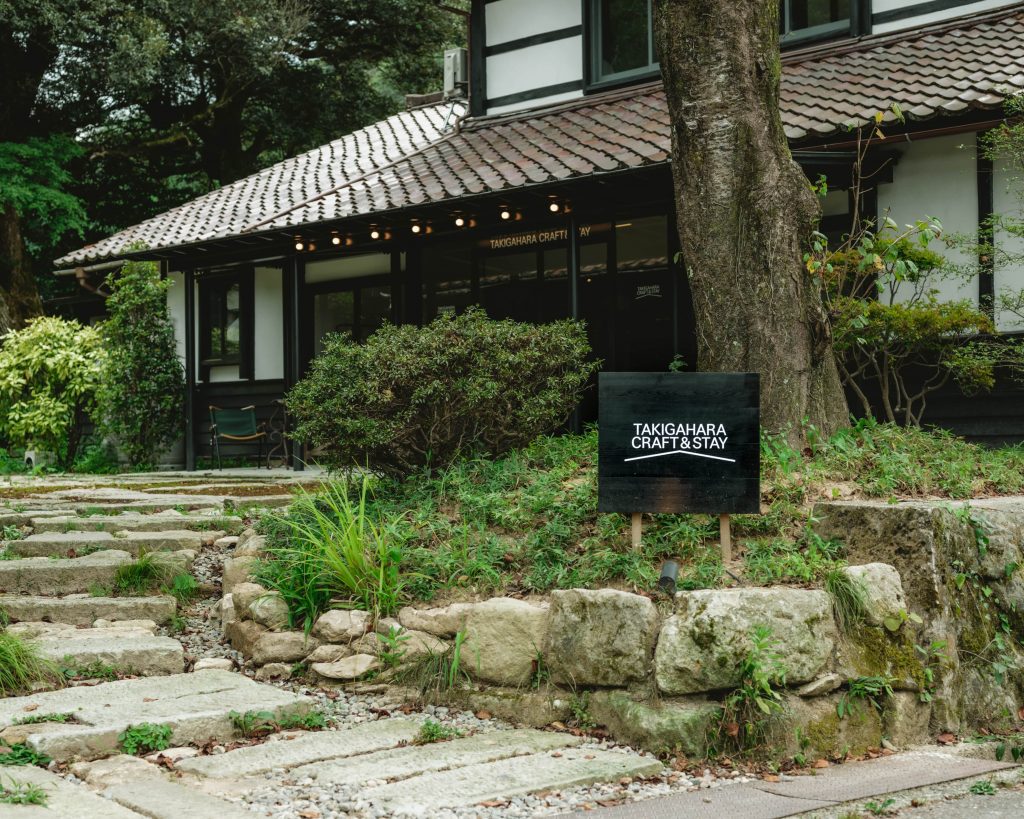
朝10時。ホステルにて参加者のみんなと顔合わせました。冒頭、滝ヶ原ファーム創始者の黒崎輝男氏を交え、イントロダクションを兼ねたラフなトークからスタートしました。
多足の草鞋で農村の生活を気づいてきた百姓の働き方に着目し、一企業で勤めるのではなく、現代の百姓(hundred works)と称し、時には手を動かし、時にはテクノロジーを活用し、さまざまな方法で生活を作っていくことがこれからの働き方だと私たちは考えています。百姓とは食べ物を自給したり、手作りの調味料を常備しながら、多種多様な生業を複数持つ人々のことです。現代、鍬とiPhoneの二刀流が実現可能な時代になりました。農村地域に遠く離れたところから人が集まり、コミュニティをつくることができます。実際に集まった参加者たちとの輪を見た時、そんなことを実感できました。
日々の喧騒を離れ、自然の中に身を置くとよりシンプルな自分になれるのか、秋晴れの陽気なのか、
初めて顔を合わせる参加者と私たちの緊張感は、いつの間にか風に紛れていました。
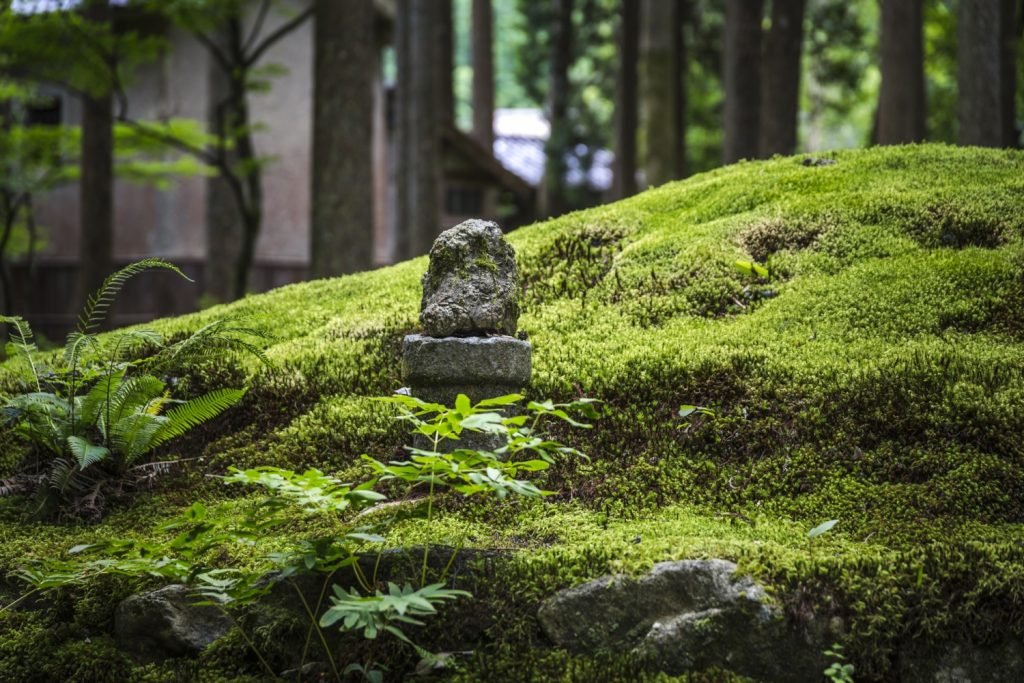
一同は、滝ヶ原ファームの起源でもある日用町の「苔の里」を訪問。黒崎氏はここの再生プロジェクトに携わったことをきっかけに、滝ヶ原町と出会い、滝ヶ原ファームがスタートしました。
昨夜の雨のおかげで苔たちは、日の光を優しく吸い込み、瑞々しく生命力に満ちた緑の絨毯のようでした。道路を挟んで向かいにある日用神社では30名ほどのボランティアの方々が苔の上に広がる落ち葉をかき集めていました。大人から子どもまでみんな楽しそうに体を動かしていました。
落ち葉は苔から養分を吸い取ってしまうため、美しい苔を維持するためには全て拾い上げなければいけません。この時期、一度風が吹けばいくらでも落ち葉が降ってくるため、拾っても拾っても完璧に拾い終えることはありません。でもだからといって、もし拾わなかったら、増え続けるばかりです。
1人で拾える範囲を維持するのではなく、手中の域を超えて拡大し続け、たくさんの人々を巻き込んで苔の文化を伝えるこのプロジェクトに健やかな感銘を受けました。
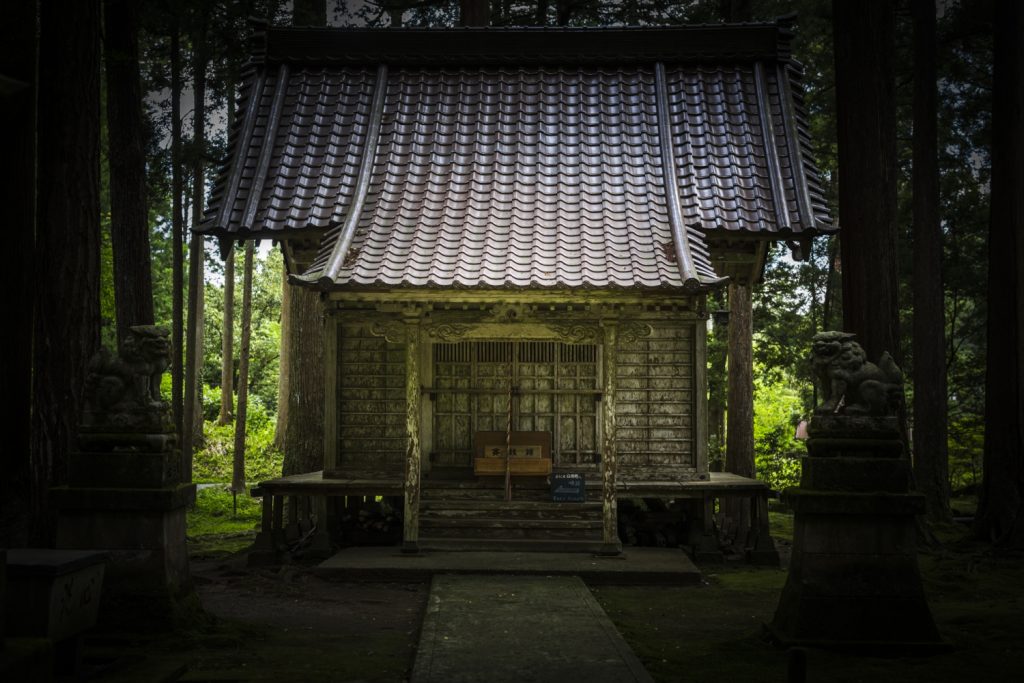
日用町を縦断する日用川、その堤防は江戸時代に作られました。それ以前は川が頻繁に氾濫することから、人々は山の上で暮らしていました。石を積み上げ堤防を作り水の流れをコントロールすることで、里に降り川の麓で生活を切り開いてきました。こうして住みはじめた人々は、暮らすために必要な”焚き付け”のために、家の周りには必ず杉の木を植えて育てました。落ちた枝を拾い集めて風呂を沸かしたり、火と密接に暮らしていたと言います。こうして落ち葉を拾っていると、自然と杉の木の周りには苔が育ち、現在の苔の里の姿になったそうです。生活の行為から生まれた苔は今や、この集落の象徴であり、魂でもあります。現在もこの限界集落で暮らす人々の自然との素晴らしい関係性に尊さを感じました。
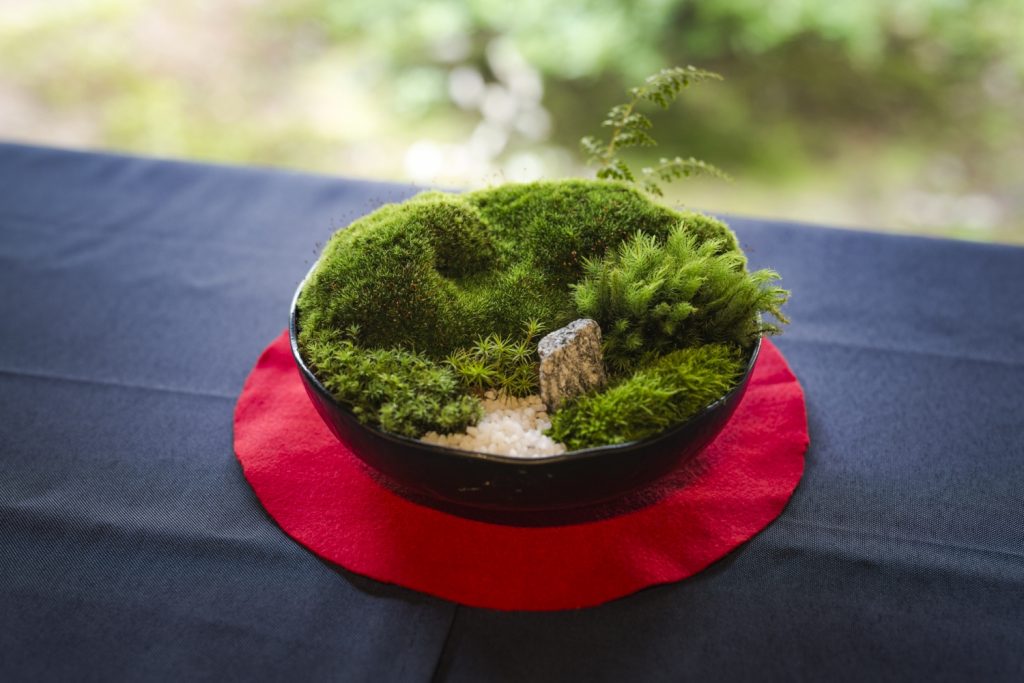
母屋に戻り、ランチタイム。でも私たちのランチはレストランやカフェではありません。かといって料理教室でもなく、アナと一緒に料理をしながらみんなでテーブルを作っていきます。キッチンに並べられた食材を見ながら、ライブで作っていきます。テーブルに並んだのは、新米に自家製味噌のお味噌汁、豆腐ペースト・ネギペーストと食べるロースト人参、柿とレタスサラダ。
食材はほぼ全て地元のもので賄われ、滝ヶ原の畑やマーケットの農家さんからオーガニックなものがたくさん集まりました。彼女が作るごはんは、いつもの食材が見たことない形をしていたり、意外な組み合わせだったりするけど、全て一口の中で調和しています。大大大満足のランチでした。
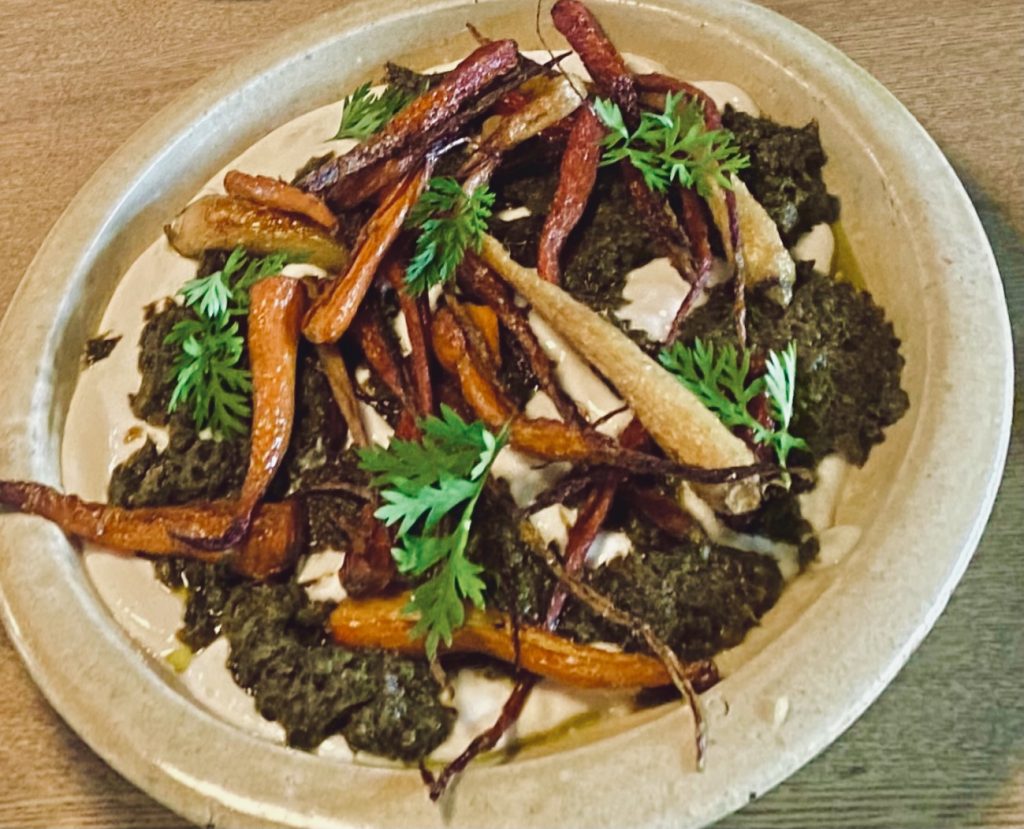
お腹を満たした一行は、長靴に履き替え、滝ヶ原ファームのお隣中出さんの蓮根畑へと向かいました。
水田のような泥の中に蓮根は育っていて、川から水をポンプで組み上げ、ホースの水圧と片手で根っこをたぐりながら、蓮根を探り当てていきます。目でその姿は見えないため、手の感覚のみが頼りとなります。(素人だから?!)
どんなものにもコツがあるのか、私は下手で手繰っても手繰ってもなかなか蓮根に辿り着けず、ついにあったと思えば見たことないぐらい小ちゃい蓮根が出てきたり。
他方、参加者の中には、前世の記憶なのか次々に掘り当てる名人もいました。
1時間半ほどで大きなカゴ二つがいっぱいになり、収穫した蓮根は川で洗い泥を落とし、ついでに長靴やホースも綺麗にして終了。
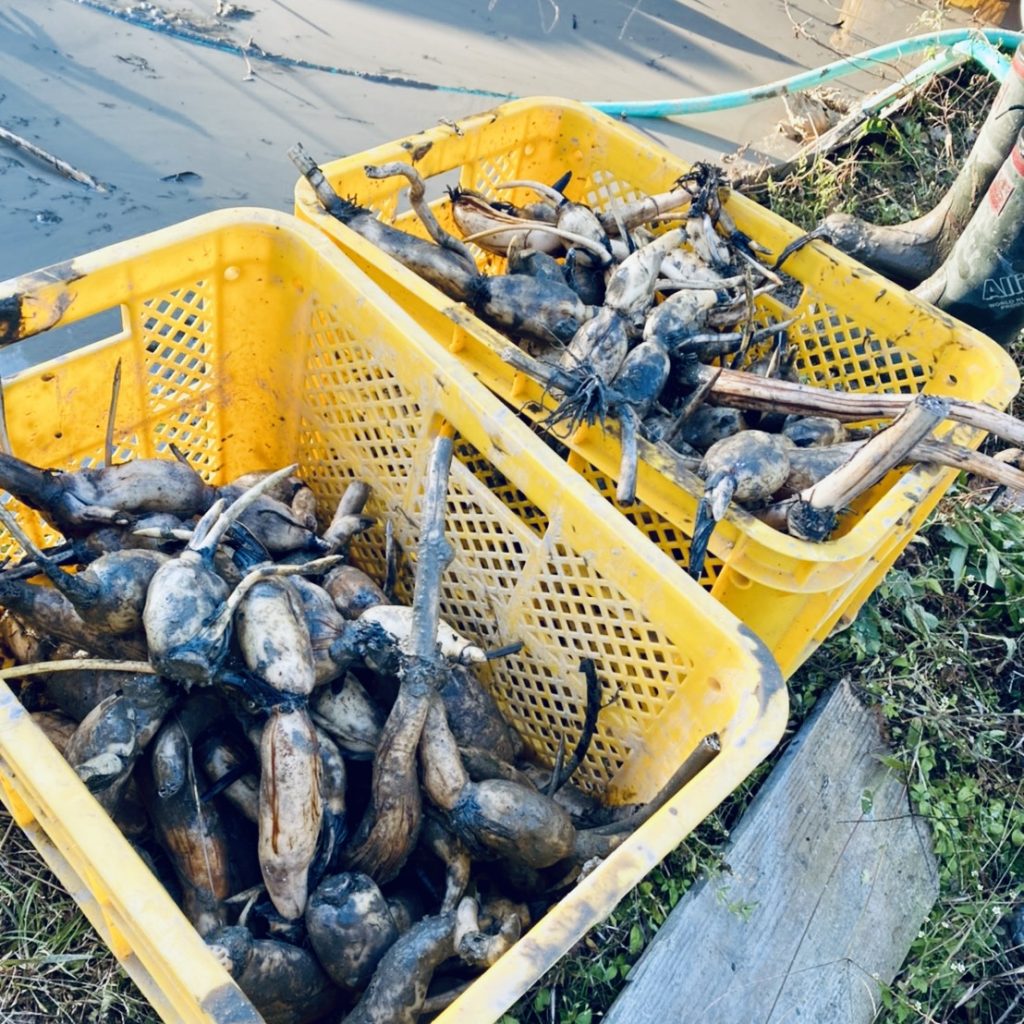
続いて、滝ヶ原石の採石場まで歩いて訪問。滝ヶ原石は凝灰岩とよばれる火山灰の塊のようなものです。水による風化に強いことから家の土台や温泉場の浴槽、石橋や堤防など幅広く使われてきました。
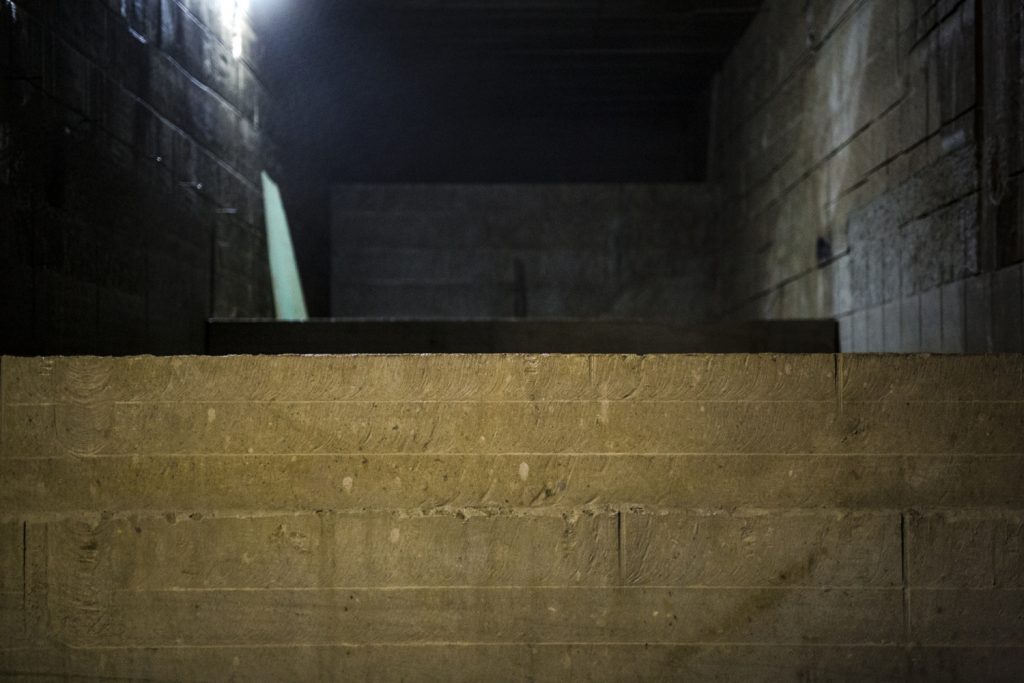
採石場の中へ入ると直径1.5mを超える巨大な刃が高速で回転し、石を加工する場面に出くわしました。静けさの中に重厚な機械音が響き渡り、じわじわと進んでいく刃になんとも言えない緊張感を覚えました。
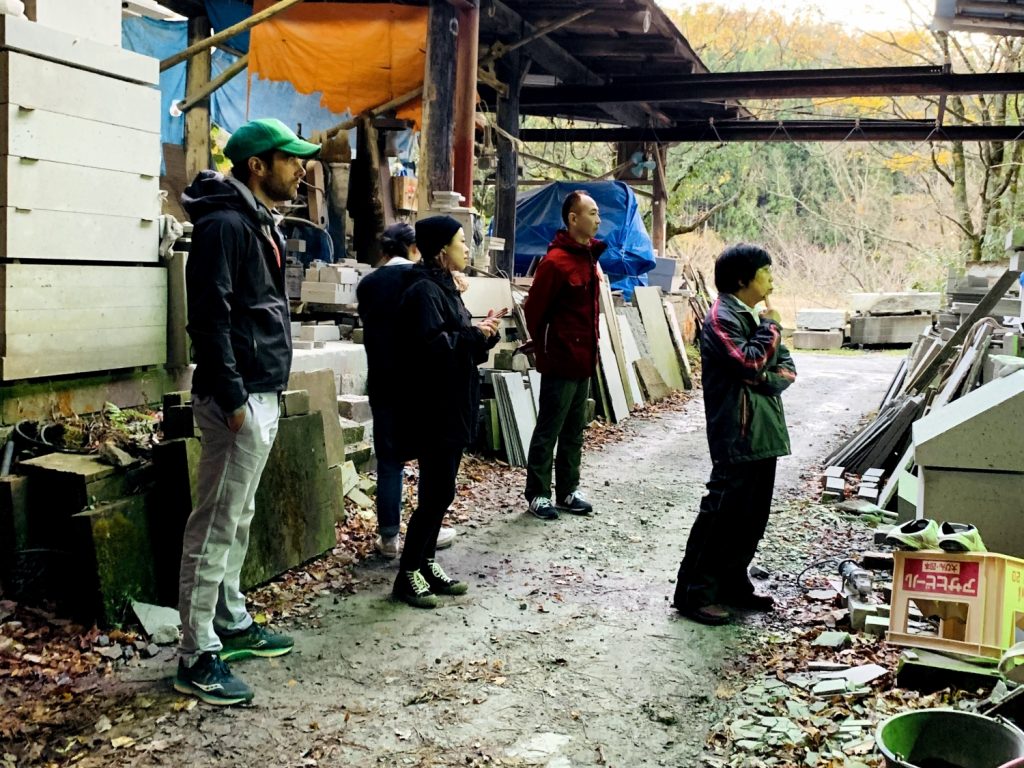
採石が産業として栄え、石文化とともに歩んできた滝ヶ原町。それは決して昔の話ではなく、現在も生き続ける姿を見せてくれました。かつてここの人々は、石を生活のために利用することで暮らしを築きあげてきました。巨大な岩のような岩山の麓から、文化を切り開いた古人に現代を生きるヒントがあるのかもしれません。画面越しになんでも知れる時代だからこそ、自分の足で歩いて見つけたものは唯一無二の情報です。
そんな”石”繋がりで、滝ヶ原ファームの庭には、解体された家の土台として使われていた滝ヶ原石を再利用したピザ窯があります。
亀の甲羅のような格好をしたこのピザ窯は、滝ヶ原ファームが誕生して間もなく福井の方の手によって作られました。
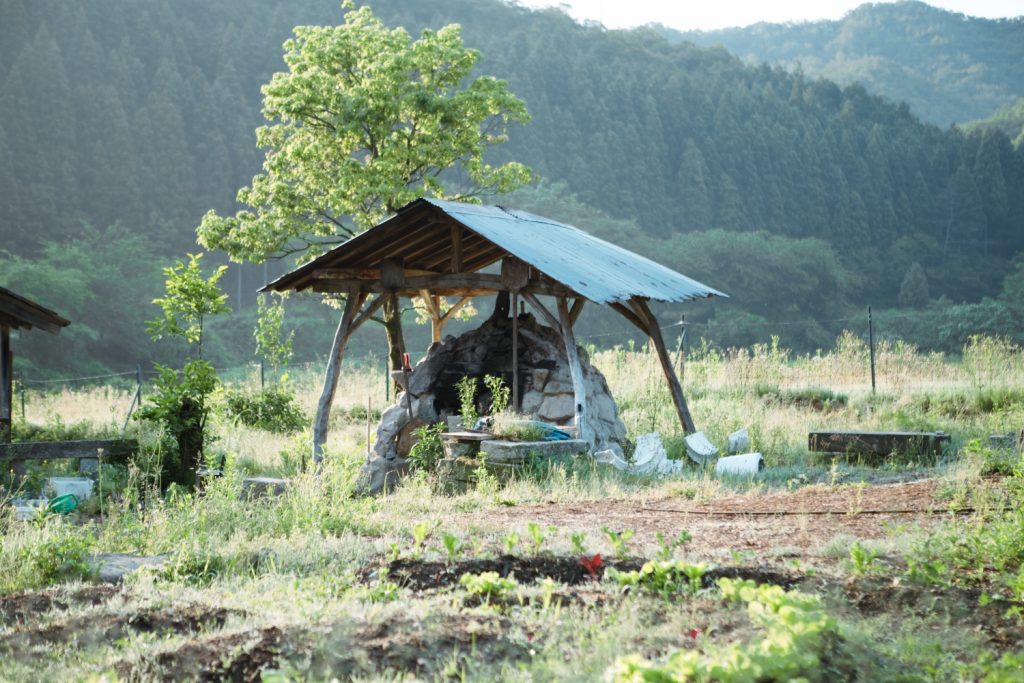
夕方、外の窯に火を入れはじめ、数時間かけて窯全体と中の温度をあげていきます。
アナはこの日のために友人から天然酵母の菌を分けてもらい、前の日からピザ生地を捏ねていました。
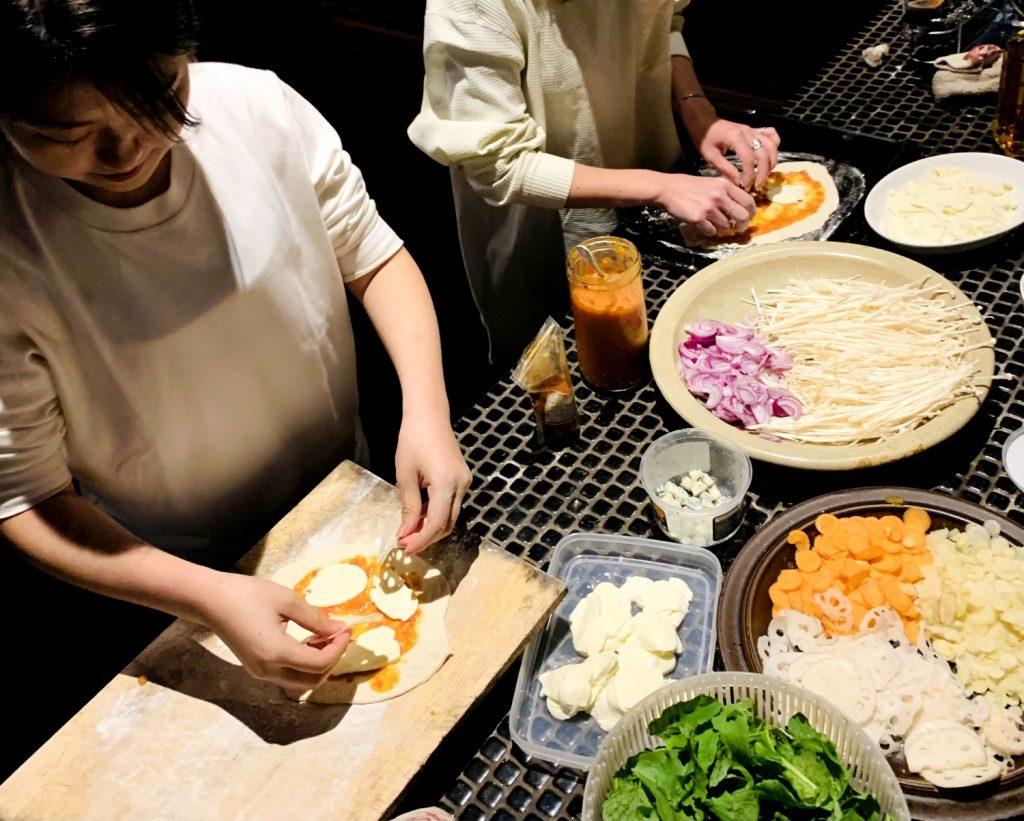
テーブルにはピザのトッピング用に、新鮮な野菜、じっくり煮込まれたトマトソースと人参の葉っぱのバジルペーストが並べられ、そのほかにもチーズやハーブなどとても豊かな材料たちがそろいました。生地も具も全部最高で、本当においしかったです。滝ヶ原にピザのデリバリーは届かないけれど、こうして手間暇かけて作ったピザを年に数回味わうのがぜいたくだと感じました。
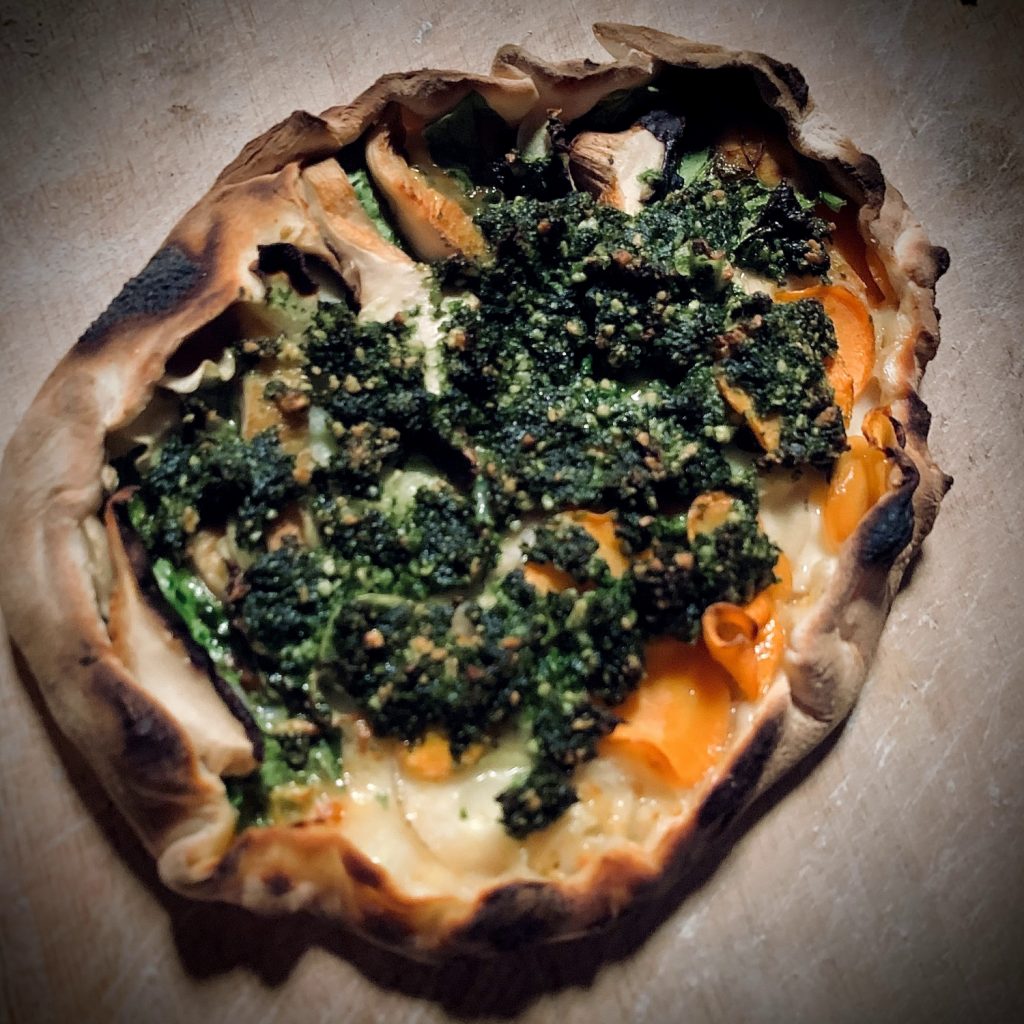
今の時代”ぜいたく”とは、高級でラグジュアリーなものではなく、旬のものや新鮮なもの、そして自然なものを食べることです。理想の食卓とはなにか?このテーマを日々探求しつづけるアナのオーガナイズによる素晴らしいディナーでした。
一同はナチュラルワインバー/ MOSS BARに移動し舌鼓を打ち、”おいしい一日”を締めくくりました。
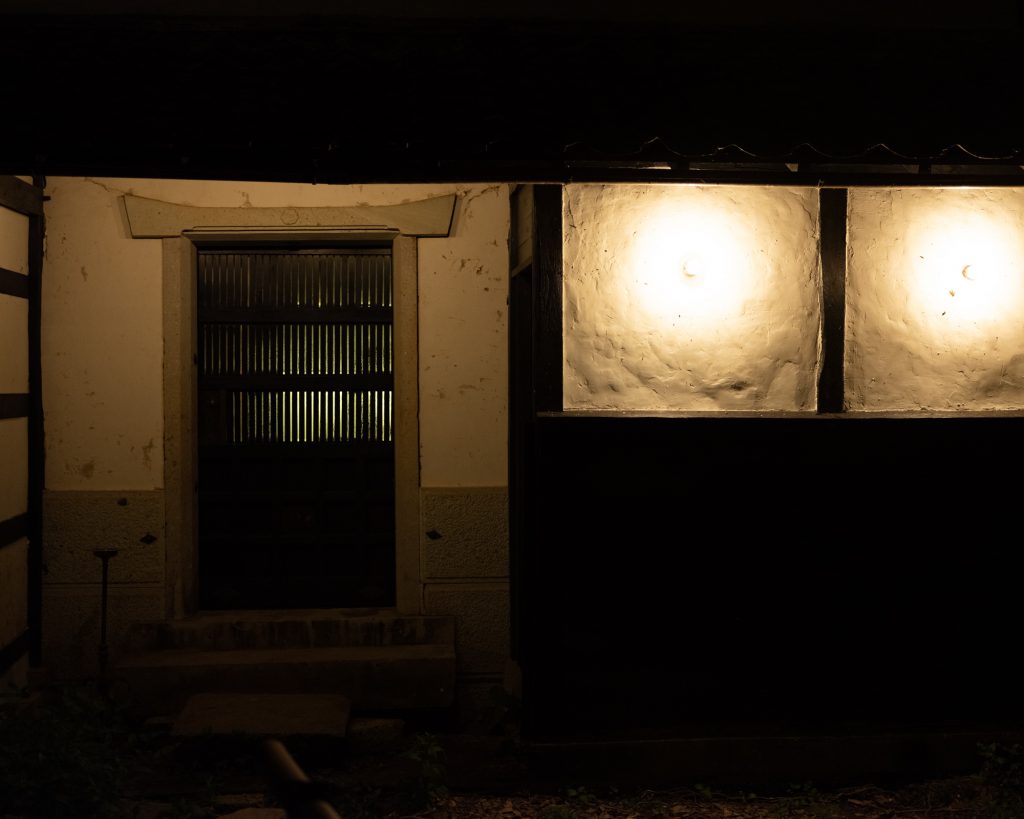
朝7時、朝靄が立ち込める中、一同は寝起きの頭もそのままにホステルを出発し、山代温泉へと向かいました。
総湯。北陸地域の共同浴場はそう呼ばれます。温泉街の周りに暮らす人たちの日常的な生活圏として、毎日総湯へ通う人もたくさんいます。ここ山代温泉総湯は、浴槽に滝ヶ原石を使っていて、温泉の心地よさに加え、優しく上質な石の肌触りを体感できます。冷え切った朝の体をしっかりと温め、新しい一日のスタートを切りました。
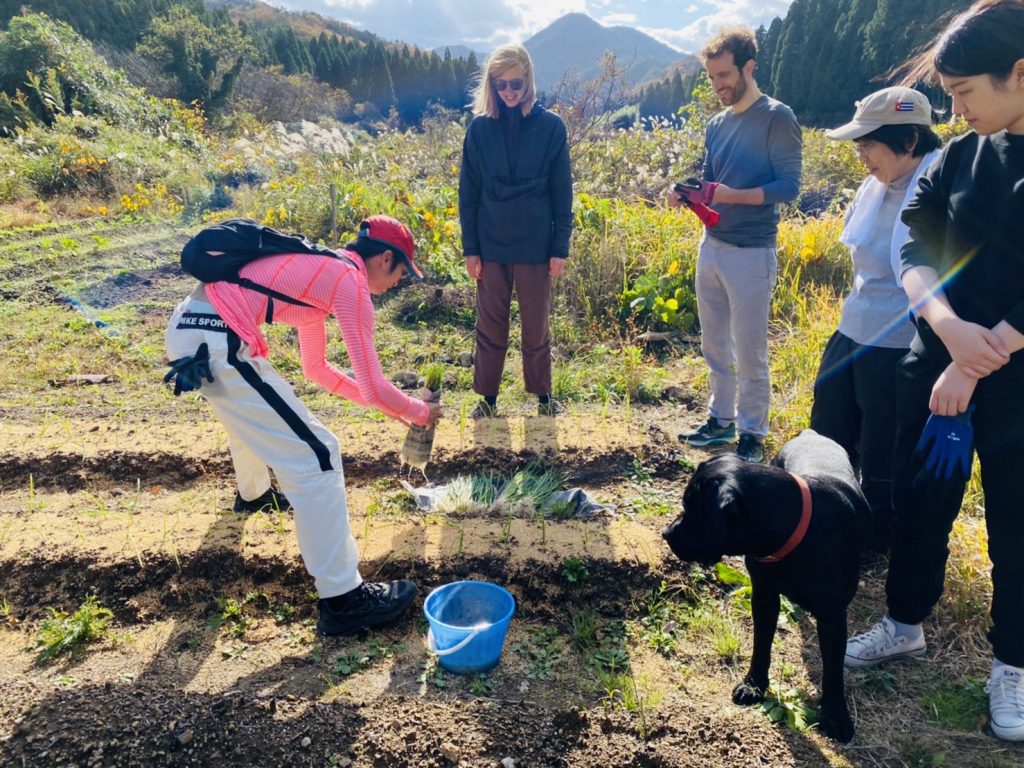
ホステルにて朝食にて朝食を済ませ、作業着に袖を通した私たちは畑へと移動しました。まず耕作放棄地とそうでないもの(畑と畑にする予定の準備段階)の土地を比較。そこには土の硬さや植物の種類など一目瞭然の違いがあります。
そしてその日のメインワークでもある玉ねぎの植え付けに取り掛かり、土を耕し肥料を撒き、畝をならして穴を明け、300個ばかりの玉ねぎベイビーを植えました。一般的に玉ねぎは脇役的な存在感が強いけど、自分で育てた玉ねぎは食卓で主役になれます。収穫は六月頃。かけた手間と”おいしさ”のつながりを実感するための第一歩となった畑仕事でした。
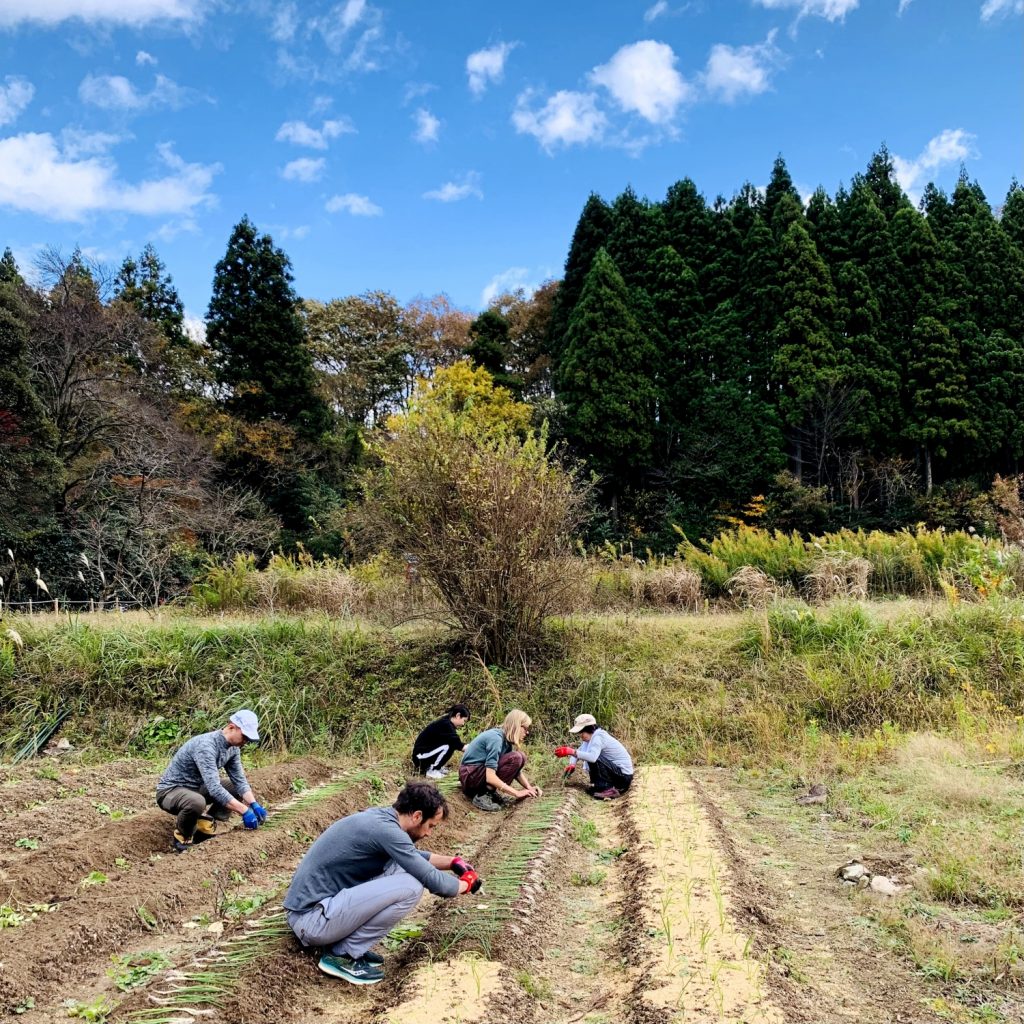
この日のランチは、ケールと山ん中たまご園の初卵のジェノベーゼパスタ、サラダ、そしてキャロットスープ。
天気が良かったので外でピクニックしました。冬が近づき、こうして外でご飯を食べいられることすら貴重に感じました。

今回最後のプログラムは酒蔵見学です。
東酒蔵さんにご協力いただき、今まさにお酒を仕込んでいる真っ只中の蔵を特別に見せていただきました。
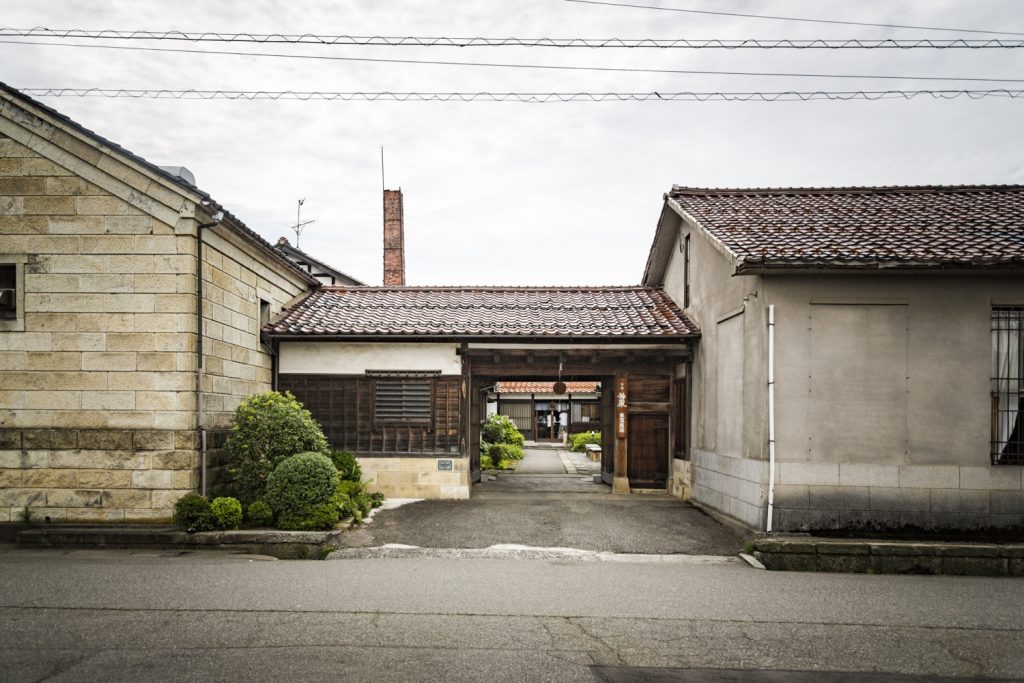
蔵は小松で最も古い石蔵で、ここのものを見て真似て石蔵というものが周りへと伝わっていきました。
良い酒をつくるために、外気による温度の変化がすくない石蔵の特性がぴったりハマったそうです。
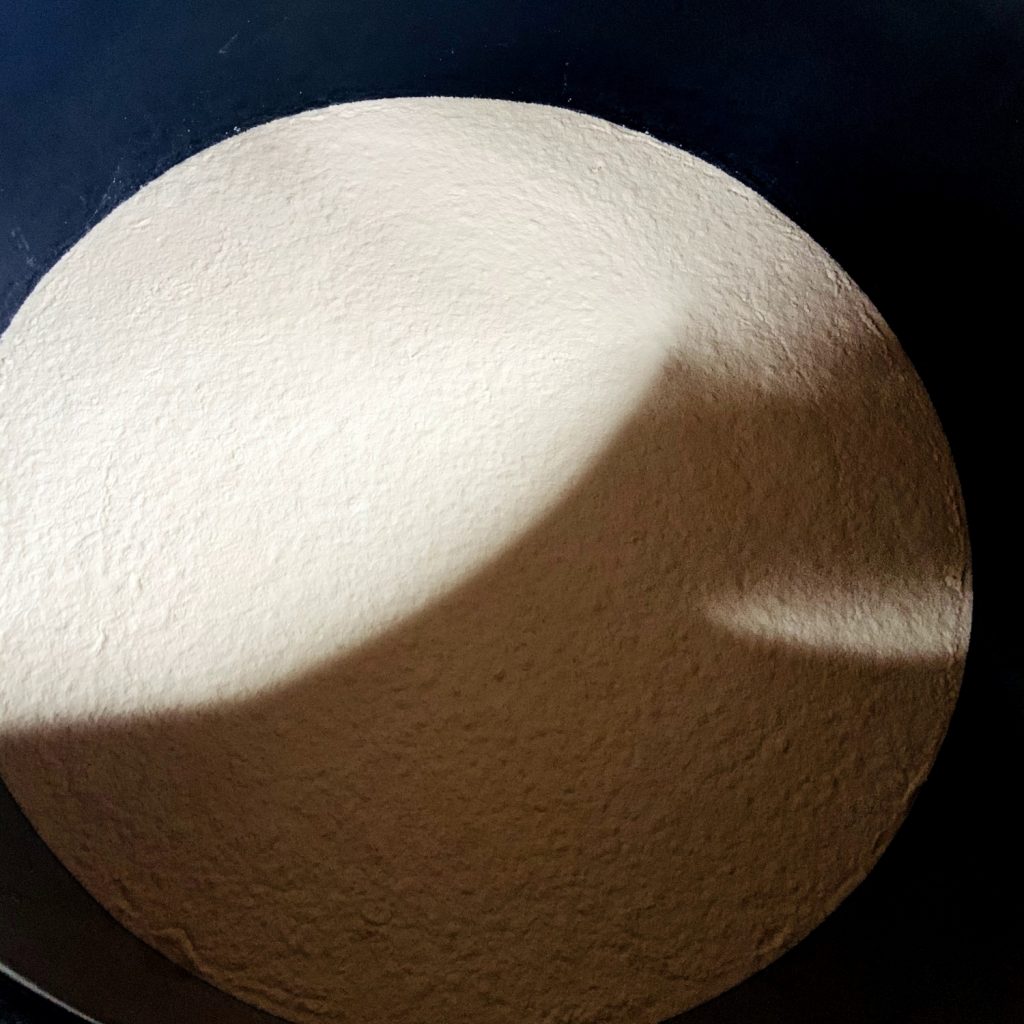
中へ入るとすぐにお米が発酵したほんのりあまい醪の香りに包まれました。樽の中をのぞいてみると、少しつんとしたガスのようなアルコール感が立ち籠め、ぷくぷくと泡を吹いていました。もちろん菌は生きているけど、ほんとうに生き物が潜んでるかのようで、魂を吹き込む作り手の思いに触れることができました。
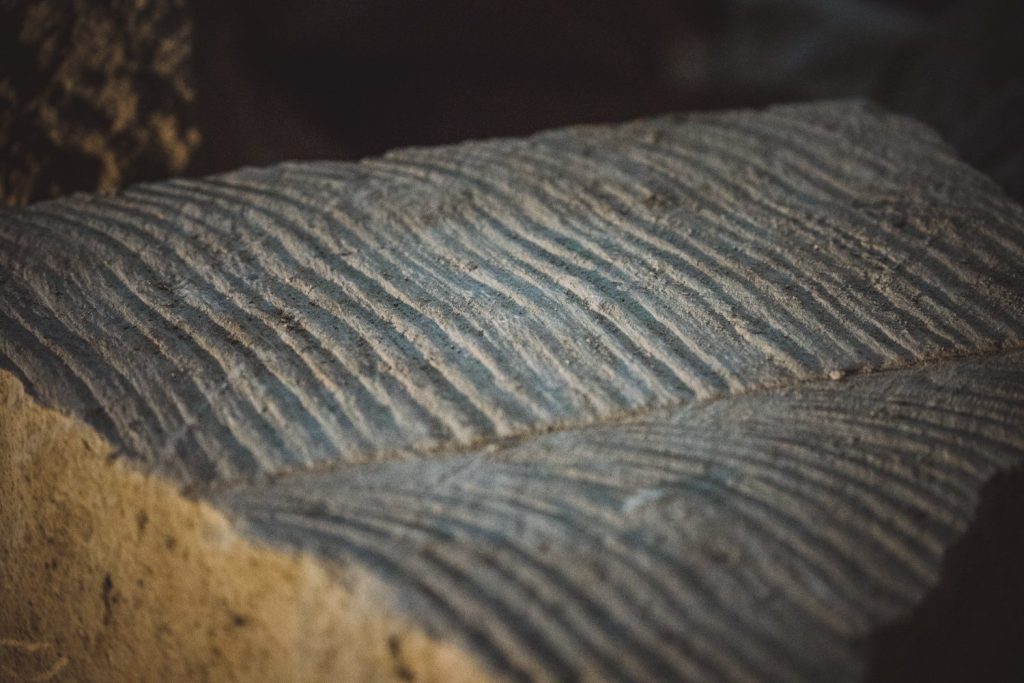
GO LOCAL.
古来から石を利用しながら生活文化を築きあげてきた石川県。身の回りにあるものを使ってどのようにして生活に工夫を凝らすか、そんな先人の知恵を見つめ直し、石を中心に、苔、泥、蓮根などさまざまな自然との新しい出会いに溢れた2日間になりました。
そしてオーガナイザーである私たちにとっても、新しい人と一緒にそれぞれの物事を見つめ直す素晴らしいきっかけとなり、次回への期待感が何倍にも膨れ上がりました。
次回のテーマは「HUMAN AND NATURE」。スペシャルゲストをお招きしての開催です。
Nov. 21
A memorable first session of the TAKIGAHARA NATURE SCHOOL was held.
The theme was “GO LOCAL”.
We reevaluate the region with a new perspective on food and manufacturing and rediscover life in the countryside.
It is also a message for us to say “Let’s go to the countryside.
At first glance, the seemingly ordinary landscape of the region contains the richness of the people who live with their roots in the land.
The event began with a brief introductory talk with Mr. Teruo Kurosaki, founder of Takigahara Farm.
Focusing on the way of working of farmers who have come to realize the life in rural areas through multi-soled shoes, we believe that the way of working in the future is not to work for a single company, but to call it a “hundred works,” and to create a life in a variety of ways, sometimes by working with our hands, sometimes by utilizing technology.
Whether it’s a simpler version of yourself when you get away from the hustle and bustle of daily life and put yourself in nature, or whether it’s a sunny autumn day
The tension between the participants and us, meeting for the first time, was soon lost in the wind.
We visited the mossy village in Niyomachi, where we came from.
Thanks to last night’s rain, the mosses were like a green carpet full of life. A group of about 30 volunteers were raking the fallen leaves from the moss. The leaves suck all the nutrients out of the moss, so they must all be picked up to maintain the beauty of the moss. At this time of year, no matter how many leaves you pick up, you’ll never completely finish picking them up, because once the wind blows, as many as you can, they will fall. But that doesn’t mean that if you don’t pick them up, they will just keep growing.
This project, which continues to expand and involve more people than we can handle on our own, is simply beautiful to see and inspiring, not just to maintain the area that can be picked up by one person, but to communicate the culture of moss.
The Hiyō River, which crosses the town, was built in the Edo period. Before that time, people lived on top of the mountains as the river frequently flooded. Stones were piled up to create a flow of water, and people who started their lives in the village had to collect cedar branches for “burning” for their livelihood, so they always planted and grew cedar trees around their houses. After returning home from school, he was sent to collect the branches and used them to boil water for the bath or to cook rice. In the meantime, moss grew around the cedar trees and developed into the moss village we know today. The moss, born from the act of living, is now the symbol and soul of this village.
Returning to the main house, it was lunch time.
New rice and homemade miso miso soup, roasted carrots eaten with tofu paste and scallion paste, persimmon and lettuce salad.
Almost all of Ana’s lunch was provided with local ingredients, harvested from farmers in the fields and markets of Takigahara.
The rice she prepares is a combination of the usual ingredients in unusual shapes and unexpected combinations, but all harmonious in the bite.
After filling our stomachs, we changed into our boots and headed to Nakade-san’s lotus root field next door to Takigahara Farm.
The lotus roots are growing in the mud like a paddy field, and water is pumped up from the river, and the water pressure of the hose and the roots are traced with one hand, looking for the lotus roots. Since you can’t see it with your eyes, you can only rely on the sensations of your hands.
I’m not sure if there is a knack for anything, but I was so bad at it that I couldn’t get to the lotus roots even if I tried, and finally, when I thought I found them, I found a tiny lotus root that I had never seen before.
On the other hand, some of the participants were masters at digging up lotus roots one after another as if they were memories of a previous life.
Two large baskets were filled in about an hour, and the harvested lotus roots were washed in the river to remove the mud, and the boots and hoses were cleaned as well.
Afterwards, we visited the quarry of Takigahara stone. Takigahara stone is like a lump of volcanic ash called tuff. It has been widely used for foundations of houses, hot spring baths, and stone bridges due to its resistance to weathering by water.
Entering the quarry, we encountered a huge blade with a diameter of more than 1.5 meters spinning at high speed to process the stone. We were able to see the current state of this town that has lived with the stone culture. Because we live in an age where everything is known through a screen, what you find by walking around on your own is a unique piece of information.
In the past, the people of this area built their life in the satoyama by using stones for their livelihood. Perhaps there is a hint of modern life in the ancient people who carved out a culture from the foot of a huge rocky mountain.
In the garden of Takigahara Farm, there is a pizza oven made of reused Takigahara stone, which was used as the foundation of a demolished house.
This tortoise-shell looking pizza oven was built by people in Fukui soon after Takigahara Farm was born.
In the evening, they begin to fire up the outside kiln and spend a few hours getting the entire kiln and the inside temperature up.
Anna had been making the pizza dough for the day, sharing some natural yeast fungus from a friend.
The table was lined with fresh vegetables, slow-cooked tomato sauce and carrot leaf basil pesto, a luxurious set of ingredients.
Luxury, as we call it, is not about luxury and luxury, but about eating what is in season, fresh and natural. What is the ideal dining experience? It was a wonderful dinner organized by Anna, who continues to explore this theme every day.
We ended the day on a high note with a delicious meal at the MOSS Bar, a natural wine bar.
At 7am, in the morning haze, we left the hostel and headed for Yamashiro Onsen, a hot spring spa.
The bathhouse. That’s what the public baths in the Hokuriku region are called. Many people who live around the hot spring town go to So-yu every day for their daily lives.
The Yamashiro Onsen So-yu, one of the local spots, uses Takigahara stone in the bathtub to provide a gentle and quality feel to the skin.
We warmed our chilled body in the morning and started a new day.
After breakfast at the hostel, we sleeved up in our work clothes and moved to the fields, first comparing abandoned and non-abandoned land (in the stage of preparation for the farm and the one to be turned into a field). There are obvious differences in the hardness of the soil and the types of plants.
Then we got to work on the main work of the day: planting the onions, tilling the soil, spreading fertilizer, tilling and drilling the rows, and planting about 300 onion babies. Onions have a strong supporting role, but the onions you grow can be a mainstay at the dinner table. The harvest is in June. Working in the field was the first step in realizing the connection between the effort we put into it and its “deliciousness.
Lunch that day was genovese pasta with kale and the first egg from Yamanaka Tamagoen, salad, and carrot soup.
It was a nice day, so we had a picnic outside. With winter approaching, it felt precious to even be able to eat outside like this.
The last program of the day was a tour of a sake brewery.
With the help of Azuma Sake Brewery, we were shown a special tour of the brewery where sake is being made.
The brewery is the oldest stone warehouse in Komatsu, and the idea of a stone brewery has been passed on to the people around it by looking at and imitating this one.
In order to make good sake, the characteristic of the stone brewery, where the temperature does not change much due to the outside air, seems to be a perfect fit.
As soon as we entered the brewery, we were surrounded by the aroma of the must, which was slightly sweet from the fermentation of the rice. When we looked into the barrel, we could see a slightly gassy alcoholiness lingering in the cask, and bubbles were blowing. Of course, the fungus is alive, but it was as if a real living being was lurking in the barrel, and I was able to touch the thoughts of the creators who breathed their souls into it.
GO LOCAL.
Ishikawa Prefecture has built up a culture of living by using stones since ancient times. We spent two days rethinking the wisdom of our ancestors on how to devise a better way of life using the things we have around us.
It was also a wonderful opportunity for us to rethink things with new people, which made us look forward to the next one.
Next time’s theme will be “Human and Nature”. Next time we will have a special guest.
2020.12.1